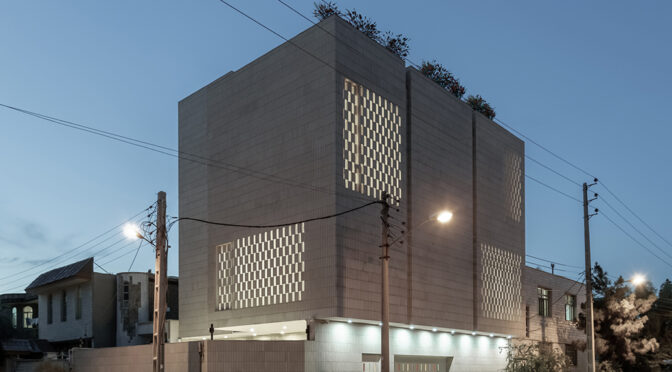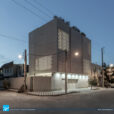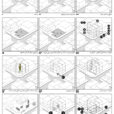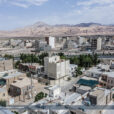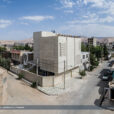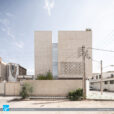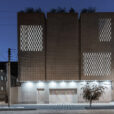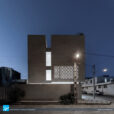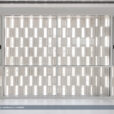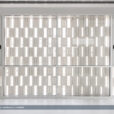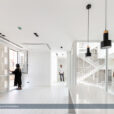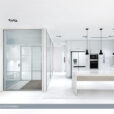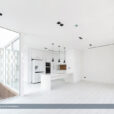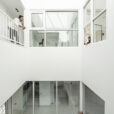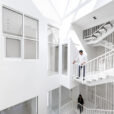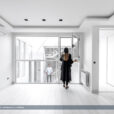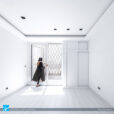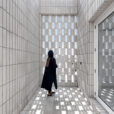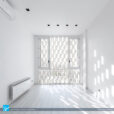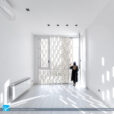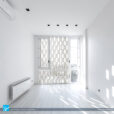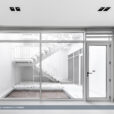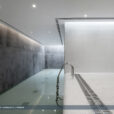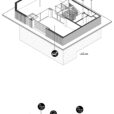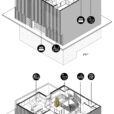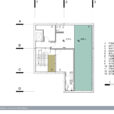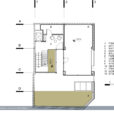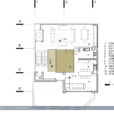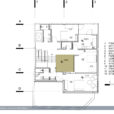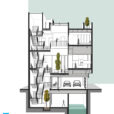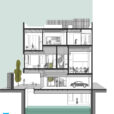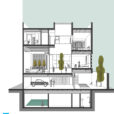خانه کلبادی
مهندسین مشاور منظر بوم نقش (شهاب میرزاییان)
موقعیت: گرمسار، سمنان، ایران
تاریخ: ۱۴۰۰
مساحت: ۵۰۴ مترمربع
وضعیت: ساختهشده
کارفرما: فریبرز کلبادینژاد
مدیر پروژه: شاهین تقدیسیان
همکاران طراحی: مهیار اخگری، ماندانا بنیادلو، مرضیه نبیزاده
مدلسازی اطلاعات ساختمان (BIM): سجاد جعفریان
سازه: بنیامین کیومرثی
اجرای سازه: کامران جلیلوند
تاسیسات: محمد بزرگنیا
اصلاح اجرای تاسیسات: هوفر اسماعیلی، نینا عموشاهی
مشاور اجرایی: امیر قائممقامی
سرپرست اجرایی: امین کارجو، محمد پورحسینی
همکار اجرایی: کامران افتخاری
گرافیک: سارا ناصری
عکس: هامون مقدم
خانه کلبادی یک پروژه مسکونی در بافت شهری گرمسار است. ضابطه ساخت ۷۰ درصد از سطح زمین با توجه به موقعیت و پیشرفت همسایگیها، مهمترین عامل تعیینکننده در تودهگذاری پروژه بود، اما طراح برای رسیدن به یک توده حجمی پاسخگو به پرسشهای اساسی طرح، نحوه تودهگذاری را تغییر داده است. پرسش اصلی طرح، چگونگی تعریف یک واحد مسکونی مستقل (خانه) در یک زمین شهری (Infill)، بر اساس ضوابط شهرسازی است، به گونهای که این خانه قابلیتهای گوناگون فضایی برای زندگی یک خانواده را فراهم کند.
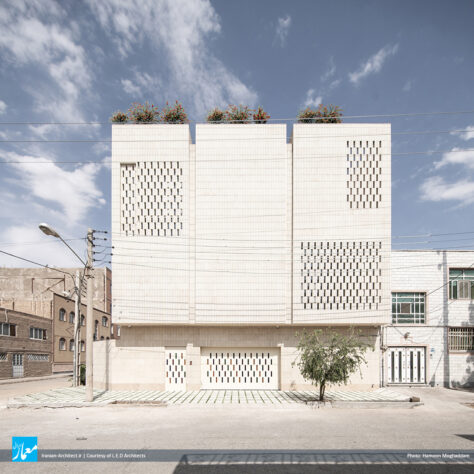
توده حجمی با پیشروی تا گذر شهری (لبه پخ) و کندن جرم در میان پروژه، هم به سطح اشغال مجاز وفادار مانده و هم سعی در افزایش مترمکعب و فضای درونی خانه داشته است. به این ترتیب، یک حیاط میانی در دل پروژه شکل گرفته است که این حیاط میانی در زیرزمین به شکل گودالباغچه است و از طریق وید که تا بالاترین تراز ادامه دارد، با تمام فضاهای پروژه در ارتباط است. هرچند هدف پروژه، بازخوانی حیاطمرکزی خانههای سنتی نبوده است، اما به لحاظ کارکردی و ابعاد سطح نورگیری، کلیه فضاهای خانه میتوانند نور خود را از این حیاط تامین کنند.
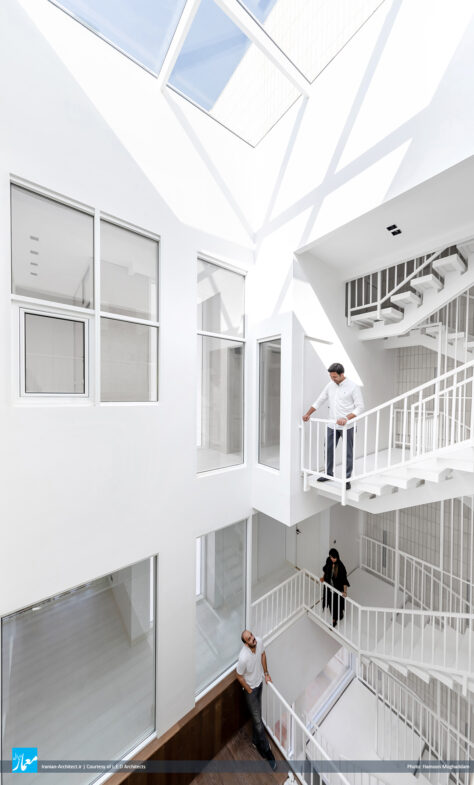
پروژه در بیرون به شکل چند مکعب بسته آجری شکل گرفته است. این مکعبها فضاهای کارکردی مختلف را در خود جای دادهاند، و در نهایت، به شکل سه گلدان بزرگ در مقیاس شهری، در بام خودنمایی میکنند. همچنین در هر طبقه، برای ارتباط نیروهای امدادی به هنگام حادثه، یک بخش پوسته آجری بنا به شکل ریلی و مجوف در نظر گرفته شده است تا امکان ورود نیروهای امداد در زمان حادثه احتمالی فراهم شود.
Kolbadi House
L.E.D Architects (Shahab Mirzaean)
Location: Garmsar, Semnan, Iran
Date: 2021
Status: Completed
Area: 504 sqm
Client: Fariborz Kolbadinejad
Project Manager: Shahin Taghdisian
Design Team: Mahyar Akhgari, Mandana Bonyadlou, Marziyeh Nabizadeh
Building Information Modeling (BIM): Sajad Jafarian
Structure: Benyamin Kioumarsi, Kamran Jalilvand
MEP Engineering: Mohammad Bozorgnia, Hoofar Esmaili, Nina Amooshahi
Construction Advisor: Amir Ghaemmaghami
Construction Manager: Amin Karjoo, Mohammad Pourhosseini
Construction Team: Kamran Eftekhari
Graphic: Sara Naseri
Photo: Hamoon Moghaddam
Kolbadi house is a residential project in the urban context of Garmsar. Construction criteria of 70% of the land surface, and location and development of neighborhoods are the most important factors in project mass production; But the designer has changed the way of massing, in order to achieve a volumetric mass that answers the basic questions of the project. The main question of the project is how to define an independent residential unit (house) based on urban criteria, in an urban land (infill), in such a way that this house provides spatial capabilities for family life.
The volumetric mass has remained faithful to the permitted occupancy level, by advancing to the urban passage (sloping edge), and digging the mass in the middle of the project, and has tried to increase the cubic meters and internal space of the project. Thus, a middle yard has been formed in the heart of the project. This middle courtyard is in the form of a garden pit in the basement, and is in relation to all project spaces, through a void that continues to the highest level. However, re-reading the central courtyard of traditional houses was not the goal of the project, but in terms of functionality and lighting level, all project spaces can provide their light from the central courtyard.
The project is formed on the outside, in the form of several closed brick cubes. These cubes accommodate different functional spaces, and finally, show themselves in the form of three large pots on an urban scale, on the roof. In order to connect the rescue forces in case of an accident, a section of brick shell in the form of rail and hollow is considered in each floor, to allow the arrival of relief forces at the time of a possible accident.

